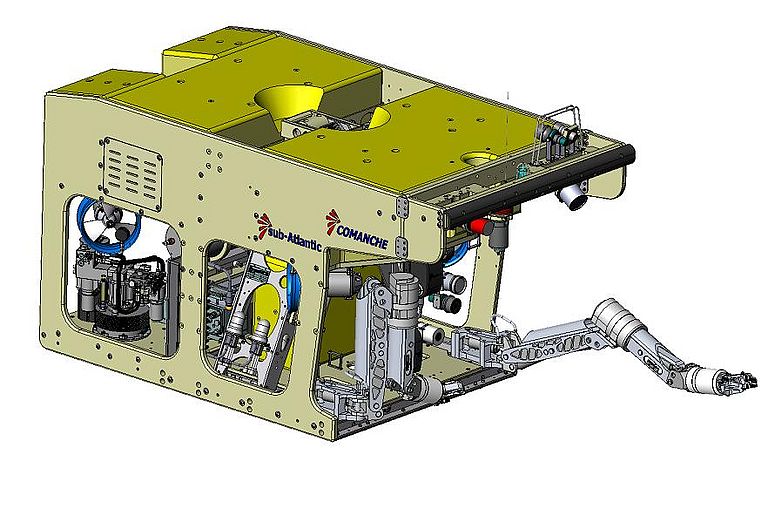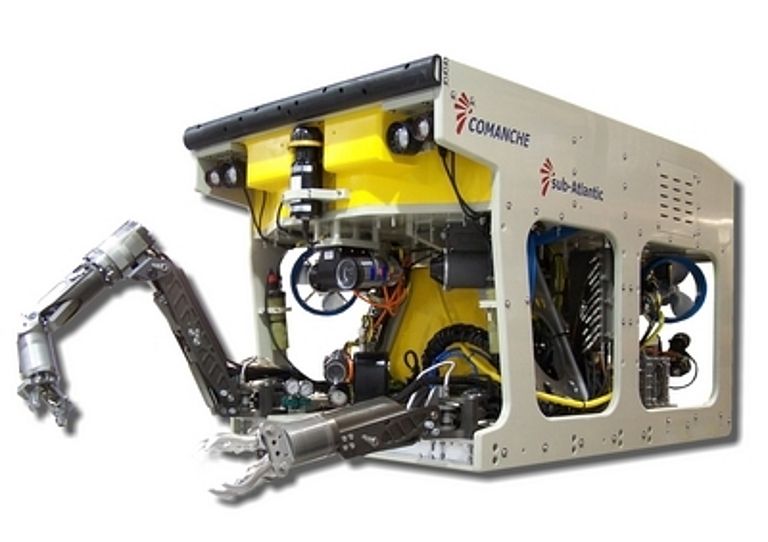A “Harbour Seal” for the Deep-Sea
September 14, 2010/Kiel. The underwater-robot fleet of the Leibniz Institute of Marine Sciences (IFM-GEOMAR) in Kiel is growing: Recently, the contract for a new medium-sized remotely operated vehicle (ROV) was signed. The ROV will be delivered by the end of this year and it will support the construction and the maintenance of the modular multidisciplinary seafloor observatory MoLab. Therewith IFM-GEOMAR owns a third state-of-the-art working equipment for its deep-sea research beside the autonomous underwater vehicle (AUV) ABYSS and the ROV KIEL 6000.
The breakdown of the offshore platform „Deepwater Horizon“ and the long and complicated work to close the borehole showed impressively, how important and essential underwater vehicles are for the work in the deep-sea. Marine scientists have discovered the advances of such high-tech equipment, too - more and more they use underwater-robotic systems for the exploration and sampling in the deep-sea. The Leibniz Institute of Marine Sciences (IFM-GEOMAR) in Kiel already operates the remotely operated vehicle (ROV) KIEL 6000 as well as the autonomous underwater Vehicle (AUV) ABYSS. Now, a third and also remotely operated vehicle named PHOCA (harbour seal) will join the IFM-GEOMAR fleet. The ROV will be mainly used for installations at the underwater observatory MoLab in the year 2011.
“PHOCA is a mid-size ROV with a total weight of 1,5 tons. It will be able operate in water depths up to 3000 meters,” explains the coordinator of the MoLab project, Dr. Olaf Pfannkuche. ”We decided to purchase a vehicle of the type ‘Comanche’. It will be built by the British company Sub-Atlantic, because we expect a lot of synergic effects with our large ROV KIEL 6000”, Pfannkuche adds. For example, the winch and cable will be compatible with both ROVs. Furthermore, the manipulators of the new robot will be from the same type as the ones from KIEL 6000 so that the investment for training and maintenance will be reduced. PHOCAs’ main advantage is that it can also be operated from the mid-size vessels of IFM-GEOMAR, POSEIDON and ALKOR. Hence, PHOCA will fill a gap in the portfolio of IFM-GEOMAR.
“We are very pleased about the accession,” says Dr. Friedrich Abegg, head of the IFM-GEOMAR ROV team. “PHOCA will bring us ahead in all technical terms and will make us more flexible.”
After all the contractual details are clarified, the delivery of the new ROV PHOCA is being expected before the end of the year. The costs for the new high-tech vehicle add up to 1,2 million Euro.
Background Information:
“MoLab” stands for “modular multidisciplinary sea-floor observatory”. This new monitoring system for the deep sea is able to measure biological, physical, chemical or geological parameters over a time of several months and a range of several square kilometres. The Leibniz Institute of Marine Sciences (IFM-GEOMAR) in Kiel is currently developing this observatory. The system combines different observing platforms, which can be arranged flexible, according to research requirements. The distinctive feature of “MoLab” is that even mid–size vessels like POSEIDON are able to transport and recover it. Moreover it can quickly be adjusted to new operation areas and scientific missions. Thus, “MoLab” closes a gap between the very expensive and also regional tied observatories on one side and the traditional short-term work operated from research vessels on the other hand. The Federal Ministry of Education and Research supports the MoLab project with 3,16 Million Euros.
Contact:
Dr. Andreas Villwock (Communication & Media), Phone: +49-431 600-2802,
avillwock@geomar.de




